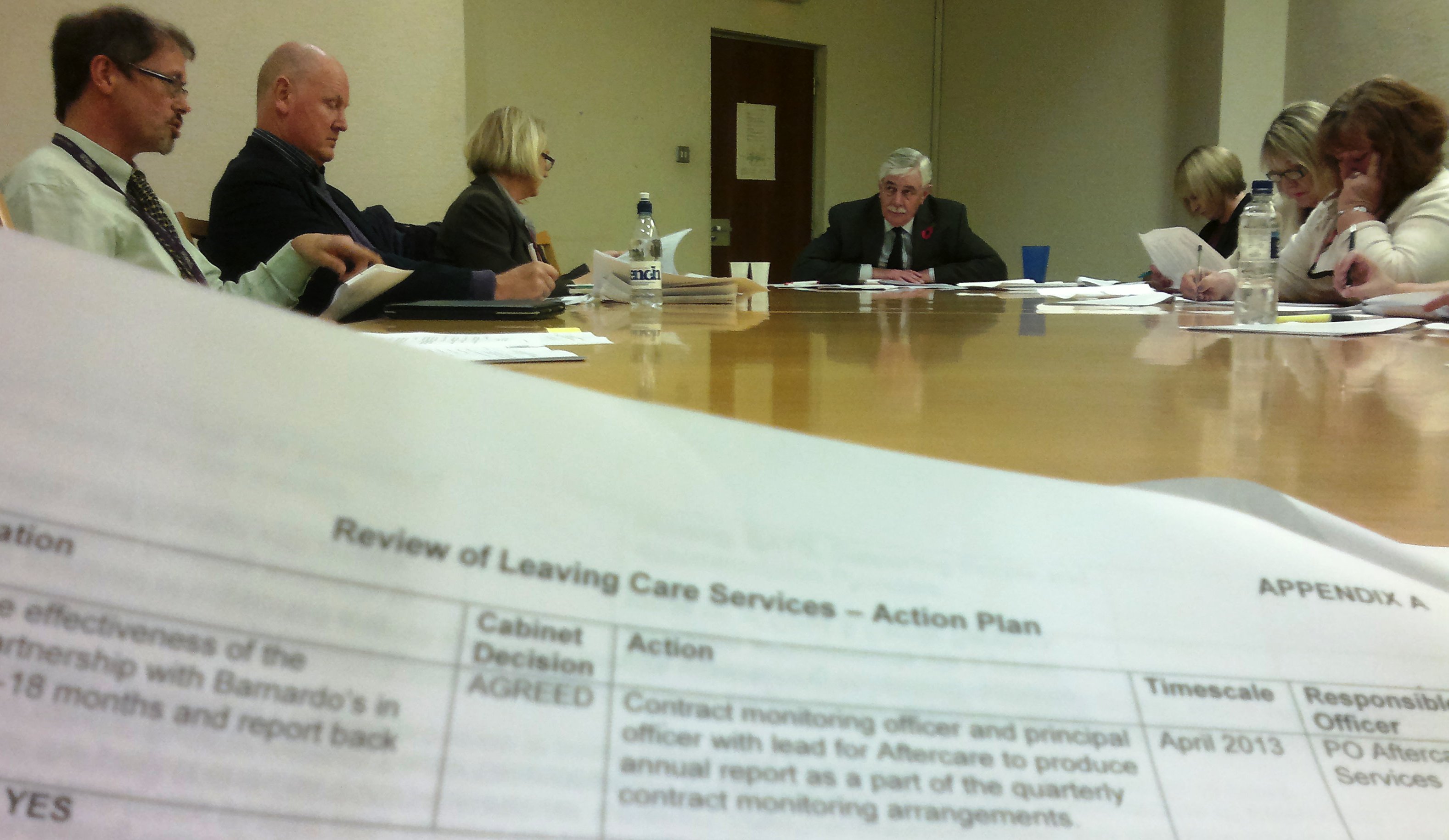The model of scrutiny that we have recently adopted in Swansea has been attracting interest from some other councils in Wales. It is a single committee system that does its work through informal cross party task and finish groups called panels. While the single committee model for scrutiny has been used before ours is perhaps a little different – so, for any Councils who might be thinking about their own structure, here is a little bit more about how ours works.
Principles
Our single committee system was introduced in October 2012 by the new administration that had been elected earlier that year. Previously we had worked with anywhere between four and ten formal committees. These principles underpinned the new arrangements:
- The highest priority is holding the whole Cabinet to account through an ongoing public conversation
- Every scrutiny councillor has the opportunity to contribute according to their interests
- Be flexible with the work plan in the best interests of citizens
- Simplicity is essential for engagement
- Regular reflection on how to be more effective followed by improvements
Work programme
The work of scrutiny is managed through a single work programme and delivered in three different ways:
Scrutiny Programme Committee – as well as agreeing the work programme this is the formal committee that deals with Cabinet Member question and answer sessions as well as pre decision scrutiny and any reports that need to be considered formally. You can find details of meetings on the Council’s website here.
Panels – these are the cross party task and finish groups that do the bulk of the work. The Committee agrees a brief for each panel and appoints a convener. Currently we have a maximum of nine panels operating.
Working groups – Some pieces of work only require one or maybe two meetings. Working Groups are set up in a similar way as panels although they are much more light touch.
Details of the work of the Committee, panels and working groups is reported regularly via this site. Further details of the current panels can be found on the Council’s website here.
Panels
There are two types of panel:
Performance panels – meet on a regular basis and look at the performance of particular services such as schools or social services. The Service Improvement and Finance Scrutiny Panel takes an overview of all performance and budget issues.
Inquiry panels – look in depth a topic of concern that has been identified by the Committee. These panels normally meet for about six months during which time they gather evidence from a range of sources.
Scrutiny letters and inquiry reports
Outcomes from the work of scrutiny, including conclusions and recommendations, are generally captured through scrutiny letters. These letters go direct from the Chair of the Committee or the conveners of panels and working groups to the relevant Cabinet Member. They are then published, along with any responses, in the papers for the Scrutiny Programme Committee.
The work of Inquiry Panels is captured by a final summary report that includes a set of specific recommendations that Cabinet must respond to. Unlike scrutiny letters these reports are signed off by the Scrutiny Programme Committee before they are presented to Cabinet. You can see all of the recent reports from inquiries in our Scrutiny Reports Library.
Councillor involvement
Within our model the involvement of councillors is flexible and matched to interests. New panels and working groups are advertised to all non executive councillors and any can be involved as a member or convener. The only rule is that more than one political group must be represented.
This approach is working well. In the first year only six of our 62 non executive councillors were not directly involved in some scrutiny activity. Typically every panel and working group has had between six and fourteen members.
There has certainly been interest in this aspect of out model in particular. The Welsh Minister for Local Government even mentioned it when speaking to a national scrutiny conference in November.
This approach to councillor involvement also extends to the annual work planning process. Every May a work planning conference, open to all scrutiny councillors, is held to consider the priorities for the work programme for the coming year.
Overall the model lends itself to scrutiny that is very much councillor led and this is exactly how it works.
Public involvement
While we cannot claim that the new model has seen an increase in public engagement we believe that it has the potential to achieve this. Panels and working groups are accessible to the public by default and we think that the informal atmosphere and the focus on specific single issues should, over time, make for better public engagement. This hasn’t happened yet, however, and this is something we will be working on.
Scrutiny support
All of the work is supported by specialist scrutiny officers but, because the panels and working groups do not operate like formal committees, they do not require routine input from committee clerks and lawyers. While the overall levels of support required are the same as they would be for a multi committee system, the relative informality of the panels and working groups allows for greater flexibility and focus.
Image: City and County of Swansea

Thank you for the clear description Dave, great to see this form of open, proactive communication on your website.
Paul
Thanks Paul. Appreciate it 🙂